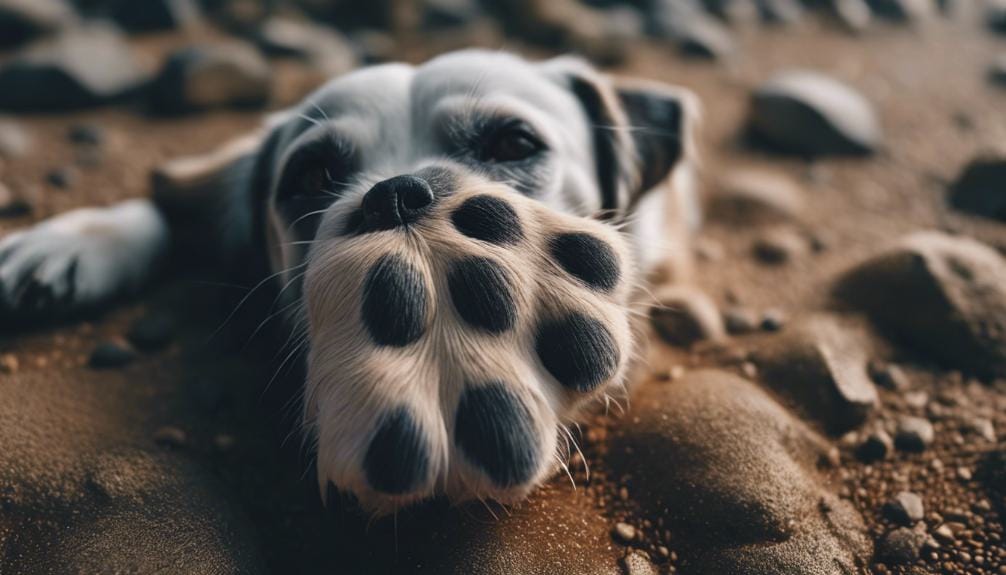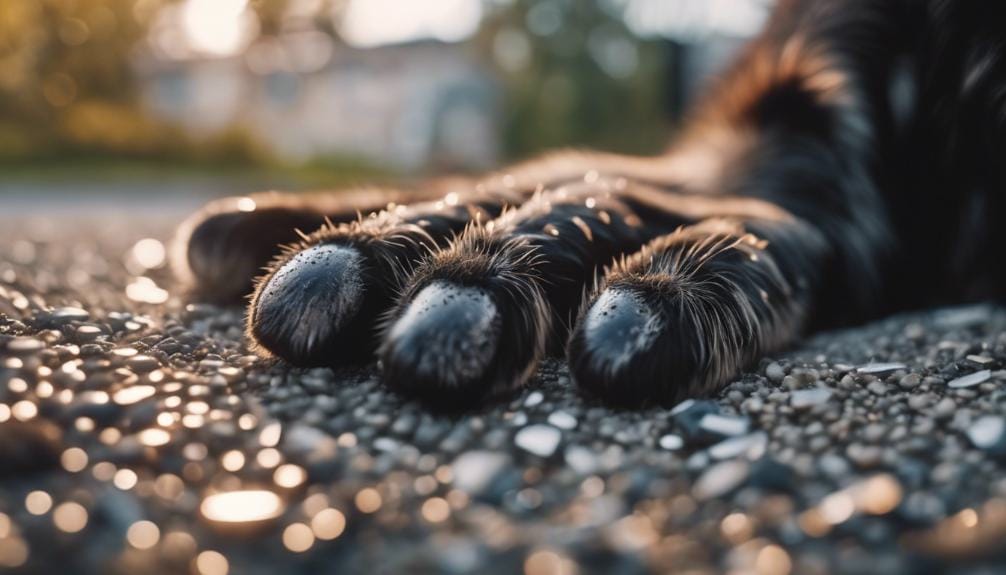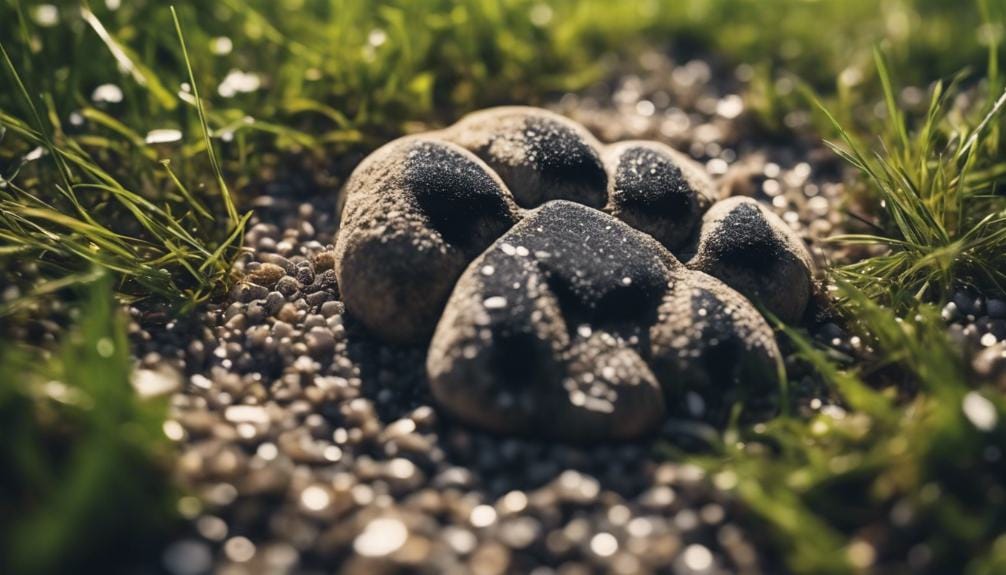Is Gravel Bad for Dogs’ Paws? Understanding Potential Risks and Solutions
When it comes to your canine companion’s well-being, you want to ensure their comfort and safety in all environments.
Have you ever considered the potential impact of gravel on your furry friend’s paws? While the surface may seem harmless, there are hidden risks that could affect your dog’s paw health.
Understanding these dangers and learning about effective solutions is crucial for safeguarding your pet’s paws.
So, what exactly should you be aware of when it comes to gravel and your dog’s paws?
Key Takeaways
- Gravel can pose risks like cuts and irritation to dogs’ paw pads.
- Recognize signs of paw injuries and seek veterinary care promptly.
- Use protective measures like booties or paw wax on gravel for prevention.
- Regularly inspect and care for your dog’s paws to maintain their well-being.
Potential Risks of Gravel for Dog Paws
Can dogs walk on gravel? Gravel presents a significant hazard to your furry companion’s paws, posing potential risks that every dog owner should be aware of. The sharp edges and rough surfaces of gravel can cause cuts, abrasions, and burns on your dog’s delicate paw pads. These injuries can lead to discomfort, pain, and mobility issues for your pet. Prolonged exposure to gravel may result in paw pad irritation and inflammation, making it crucial for you to take proactive measures to protect your dog.
To prevent such paw injuries, it’s essential to carefully monitor your dog’s interaction with gravel surfaces. Regularly check their paws for any signs of irritation or injuries after walks or playtime in areas with gravel. Additionally, consider using protective measures such as dog booties or paw wax to create a barrier between your dog’s paws and the abrasive gravel. By taking these preventative steps, you can significantly reduce the risk of your dog experiencing discomfort or pain from gravel-related paw issues.
Understanding Dog Paw Sensitivity

To truly understand the sensitivity of your dog’s paw pads, it’s essential to recognize their crucial role in providing protection and sensory perception. Dogs rely on their paw pads for various functions, making them a vital part of their anatomy:
- Protection: The thick outer layer of your dog’s paw pads acts as a shield against rough terrains, sharp objects, and extreme temperatures, safeguarding their delicate inner layers.
- Traction: Paw pads help your dog navigate different surfaces by providing traction, aiding in stability and preventing slips and falls.
- Sensory Perception: The sensitive inner layer of paw pads contains a high concentration of nerve endings, allowing dogs to gather information about their environment through touch.
- Temperature Regulation: Paw pads assist in regulating body temperature, acting as insulation from both hot and cold surfaces, ensuring your dog’s comfort in varying climates.
Understanding the significance of your dog’s paw pads is crucial in preventing potential risks and maintaining their well-being. Being mindful of the surfaces they walk on, choosing the best types of terrain, and regularly inspecting their paws can help prevent injuries and discomfort. By prioritizing paw care and making informed choices, you can ensure your furry friend’s paws stay healthy and happy.
Signs of Paw Injuries in Dogs

Understanding your dog’s paw pads’ sensitivity is crucial for identifying signs of paw injuries that may affect their well-being and mobility. Signs of paw injuries in dogs can manifest in various ways.
One common sign is excessive licking of the paws, which can indicate discomfort or pain. If you notice your dog showing reluctance to walk, favoring a certain paw, or suddenly limping, these could all be signs of paw injuries. Tears or cuts on the paw pads, along with inflammation, redness, or bleeding, are visible symptoms that shouldn’t be ignored.
Additionally, if you detect an unusual odor coming from your dog’s paws, it might suggest an underlying issue that needs attention. Cracked nails, loose flaps of skin, or foreign objects stuck in between the paw pads are also signs of potential injuries that require prompt care.
Regularly inspecting your dog’s paws for any abnormalities is essential for maintaining their paw health. If you notice any of these signs of paw injuries, it’s crucial to seek veterinary care promptly. Proper treatment and care can help alleviate your dog’s discomfort and prevent any potential complications. Remember, your dog’s paws play a vital role in their daily activities, so keeping them healthy is key to their overall well-being.
Protecting Dogs’ Paws on Gravel

Inspecting your canine companion’s paws before allowing them to walk on gravel is crucial for preventing potential injuries. Pea gravel and other rough textures can pose risks to dogs’ paws, leading to paw injuries or discomfort.
Here are some tips to help protect your furry friend’s paws on gravel:
- Check for sharp objects: Before letting your dog walk on gravel, carefully inspect the area for any sharp objects like glass or metal that could harm their paws.
- Monitor gravel temperature: Especially in hot weather, test the temperature of the gravel by touching it with your hand. If it feels too hot for you, it could burn your dog’s paws.
- Use paw protection: Consider using booties or paw wax to create a barrier between your dog’s paws and the rough gravel surface, providing an extra layer of protection.
- Apply moisturizing balm: Regularly applying a moisturizing balm specifically designed for dogs’ paws can help keep their paw pads hydrated and prevent them from drying out on rough surfaces like gravel.
Best Practices for Dog Paw Care on Gravel

As you aim to safeguard your dog’s paws from potential gravel risks, adopting best practices for paw care is essential to ensure their well-being and comfort during walks on rough surfaces. When walking your furry friend on gravel, consider using pea gravel as it’s softer and more comfortable for their paws. This type of gravel is good for dogs as it provides a cushioning effect while still allowing for proper paw traction.
To prevent weed growth and maintain a debris-free surface, regularly inspect your dog’s paws for any cuts, tears, or foreign objects after walks on gravel. Additionally, apply a moisturizing balm or wax to keep their paw pads hydrated and protected. Nail trimming is crucial to prevent injuries or discomfort from nails getting caught in the gravel.
Before letting your dog walk on gravel, always test the temperature of the surface to avoid burns, especially during hot weather. It’s also important to avoid sharp gravel that could cause injuries. By following these practices for dog paw care on gravel, you can ensure a safe and enjoyable walking experience for your furry companion.
Frequently Asked Questions
Is It Bad for Dogs to Walk on Gravel?
Walking on gravel can be harmful to dogs’ paws due to sharp edges and rough surfaces. It’s crucial to assess the gravel type before allowing your dog to walk on it to prevent cuts, abrasions, and discomfort.
What Kind of Gravel Is Best for Dogs?
For your furry friend, pea gravel is the top choice. Its smooth, rounded edges are gentle on paws, reducing the risk of injuries. Plus, it offers excellent drainage and low maintenance. Keep your pup happy and safe!
Does It Hurt Dogs Feet to Walk on Rocks?
Walking on rocks can hurt dogs’ feet. Sharp edges can cause cuts, discomfort, and infections. Protect your furry friend by choosing softer surfaces. Avoid potential injuries and keep those paws happy and healthy!
Will Dogs Dig Through Gravel?
Dogs may dig through gravel due to natural instincts or boredom. Providing a designated digging area, redirecting behavior, and using deterrents can discourage this. Addressing issues early and training can help prevent excessive digging in gravel.
Conclusion
In conclusion, gravel can pose risks to your dog’s paws, but with proper care and precautions, you can ensure their safety and comfort.
By checking for sharp objects, maintaining paw health, and considering alternatives like pea gravel, you can create a paw-friendly environment for your furry friend.
Remember, a little attention to detail can go a long way in keeping your dog happy and healthy on gravel surfaces. Stay proactive and prioritize your pup’s paw care!

